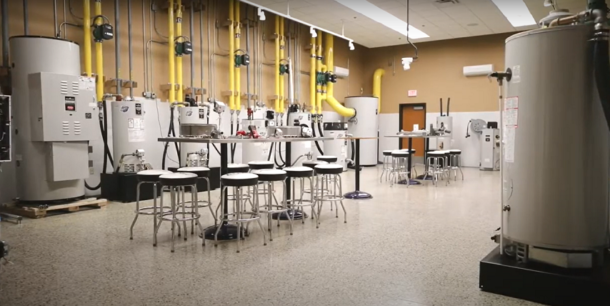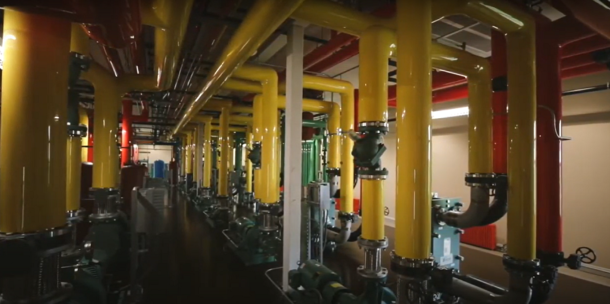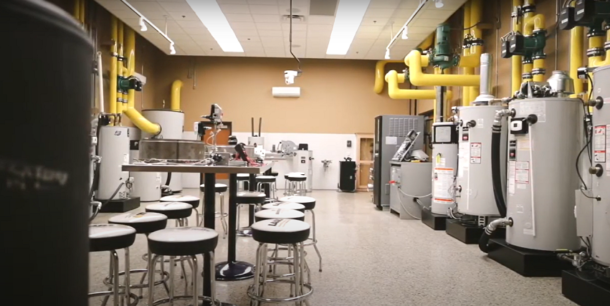Ongoing training is an essential pillar of the skilled trades. Trades professionals who proactively engage with opportunities to learn about new processes and new technology deliver better experience and workmanship, make more educated decisions, complete more work in less time and establish trust with customers.
In short, ongoing training helps create the right conditions for positive business growth.
Unfortunately, for a variety of reasons, our industry has not traditionally made non-required continuing training a priority. Many skilled tradespeople are reluctant to pursue the opportunities made available by professional organizations, trade associations and manufacturers. Business owners and leadership teams often fail to invest in training for their technicians and office staff. Additionally, the current COVID-19 crisis has had an enormous impact on the nature of training in the industry.
Virtual training offers convenience and accessibility, but in-person, hands-on engagement has proven to be the most effective and preferred method of training for skilled trades professionals. While the best examples of virtual training can replicate some of the elements of live, personal interaction by providing opportunities for direct feedback and questions, the vast majority of virtual training options are pre-recorded. The effective elimination of live training by safety concerns, travel restrictions and social distancing is yet another huge COVID-19-related challenge our industry faces.

What training is and isn’t
Our industry may be short on training, but we use the word a lot. In fact, it’s one of the most overused terms in the skilled trades professions, primarily because we apply it to many things that aren’t training.
Training is not just information sharing. Training involves both the sharing of information and action.
When you’re weight training, you don’t watch it on a screen. You might review proper form and execution, but weight training is an action. It’s exactly the same for professional technical training in the trades. Training involves watching and then doing, learning through hands-on experience. Many people have pursued a career in the trades because they like to work with their hands and learn by doing.
Many trades professionals have demonstrated initiative and embraced the virtual training that has sprung up in the last year. Video tutorials and webinars have value in introducing technicians to new equipment, processes and concepts, but that’s only half of the full training experience. Following up virtual training with hands-on practice is essential for fully translating information into actionable skill. As the pandemic slows, expect in-person training to boom as agents look to validate the practices and concepts seen on the screen. Trades people are looking forward to mixing it up, getting back to their roots and making things happen.

A “traditional” industry
If you surveyed the skilled trades right now and asked what the biggest barrier to training is right now, most professionals would say they’re too busy and don’t have enough people. It’s true that the labor shortage is a lasting challenge, but there may be deeper reasons for training hesitance.
In my early days as an HVAC technician, I learned the ropes working with a specific manufacturer. I was loyal to that manufacturer, but I had less confidence working with other companies’ products. We do what we know how to do. A related fact is that we don’t like to admit to ourselves or others what we don’t know or are unsure about. Many people in today’s world, not just in the skilled trades, feel incredible pressure to already know everything they need to know.
In the trades, an unfortunate result is that too many professionals wrongly calculate that by exposing themselves to training, they’re also revealing what they don’t know. Getting them to understand that it’s OK not to know something is a major obstacle for trainers and business owners.
Many trades people value their personal experience in the industry over formal ongoing training. While experience on the job is critical, so is continuing engagement with new technology and processes.

The critical carrot
We know why training is important. We know what it can be worth. How do you convince the industry to commit to training as a critical element of our industry?
You have to have a carrot.
There has to be something at the end that makes it worthwhile, whether it’s recognition within the company, financial reward or added benefits. The difference in experience and training is reflected in the different labor rates for a master plumber and a journeyman. The recognizable difference in skills and knowledge typically sets a master apart.
The more relevant the carrot is to the training, the more effective it will be in the long run. More training can put a technician in position to earn more money as a local expert, and that’s a gift that keeps on giving.
Confidence is at the very top of the list of advantages resulting from quality training. When technicians have a solid foundation of up-to-date skills, customers end up paying for service they’re satisfied with. Confident techs deliver better experience and build relationships.
The better trained a contractors’ team is, the fewer mistakes they’ll make. With training, techs work more quickly and more accurately and in the end are more cost effective.
 Dustin Bowerman is director of corporate training and product support for Bradford White Corporation, a full-line manufacturer of residential, commercial and industrial products for water heating, space heating, combination heating and storage applications. For more information, visit www.bradfordwhitecorporation.com.
Dustin Bowerman is director of corporate training and product support for Bradford White Corporation, a full-line manufacturer of residential, commercial and industrial products for water heating, space heating, combination heating and storage applications. For more information, visit www.bradfordwhitecorporation.com.




Join the conversation: